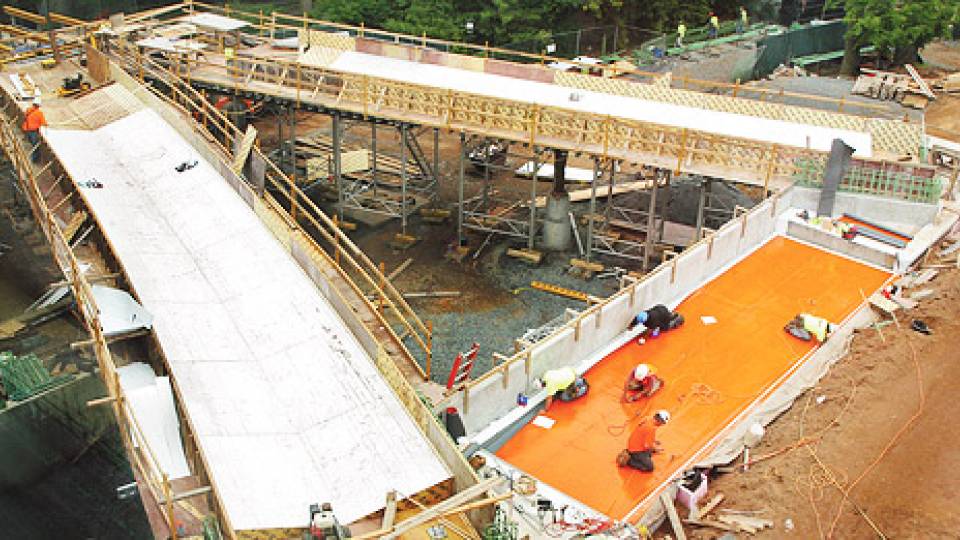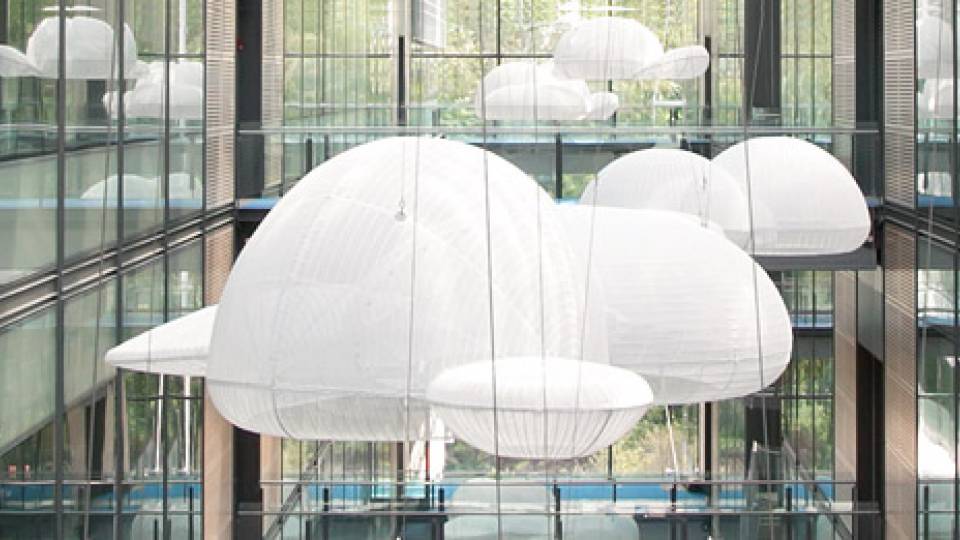The University's campus planning over the next several years will
emphasize the development of academic "neighborhoods," with projects
including the construction of a new chemistry building closer to the
homes of other science departments, according to President Shirley M.
Tilghman.
Speaking at a meeting of the Council of the Princeton University
Community on Monday, March 28, Tilghman also discussed plans for
expanding the capacity of the Engineering Quadrangle and providing
additional space for some social science and humanities departments. In
addition, she offered updates on planning for a new pedestrian bridge
spanning Washington Road that would serve as a "gateway" to the campus
and local community, as well as further renovations in the residential
colleges.
In a related announcement at the meeting, Provost Christopher Eisgruber
said that the University will install wireless technology in the
undergraduate dorms and in the Graduate College and its annexes this
summer. Users will have wireless access to campus Internet resources
from their rooms and from common areas. Currently, full or partial
wireless coverage is available in many of the University's academic and
administrative buildings.
The projects Tilghman identified are part of a campus planning process
that has been examining needs over the next five to 10 years.
University officials will further develop and refine the plans during
the next two years, with a commitment to preserving Princeton's
pedestrian campus and remaining sensitive to environmental concerns,
she said.
"We do not want to become a campus where people are in cars or the only
way to get around is on a shuttle bus," Tilghman noted. "We want to
preserve the park-like character of the campus. In all of the projects
that we're talking about over the next 10 years, we will not be
absorbing more green space."
Tilghman cited five major projects for the coming years, all of which
are still in the early planning stages: a new building for the
chemistry department; a pedestrian bridge over Washington Road; a
renovation of Frick Lab; renovations and additions involving the
School of Engineering and Applied Science; and renovations to the
residential colleges.
The new chemistry building will be constructed at the site of the
Armory on Washington Road, moving the department south from its current
home in Frick Lab and closer to the facilities for physics, molecular
biology, genomics and other science departments. "Chemistry has
fundamentally become a discipline whose intellectual spokes are
reaching out to almost all of the other sciences," Tilghman said. "In
order for it to succeed in the future and to be as cutting-edge in
research as we expect all our sciences to be, it needs to be in closer
proximity to the sciences that really matter for its future."
Frick, which was built in the late 1920s, is no longer well suited for
the department's needs, she added. "It simply cannot sustain another
major renovation so that it can represent modern chemistry at
Princeton," said Tilghman, who expects the project to take at least
five years. Options for where to house the current occupants of the
Armory, which include the Princeton University Federal Credit Union,
Outdoor Action's climbing wall, Army ROTC and theater and dance storage
and shop space, are being discussed, she added.
The new chemistry building would be part of a new "science compound"
that would incorporate Fine, McDonnell, Jadwin, Peyton, Lewis Thomas,
Schultz, Eno, Moffett and Guyot halls as well as the Icahn Laboratory,
which houses the Lewis-Sigler Institute for Integrative Genomics, and
the Frank Gehry-designed Lewis Library, which will be completed in
2007.
To bring the various buildings together, the University plans to build
a "very distinguished" pedestrian bridge above Washington Road,
Tilghman said. The bridge, which is being developed by noted Swiss
bridge designer Christian Menn, would span from Icahn Lab to Jadwin
Hall and the future chemistry building.
"We are very excited about this bridge," said Tilghman, who added that
she expects to see a model of the bridge soon. "This is a very
important project for Princeton. This is the gateway to the campus, but
it's also the gateway to the town of Princeton."
The science compound is one of four "academic neighborhoods" on campus.
Others revolve around engineering and applied sciences, the social
sciences and the humanities.
As part of the chemistry department's planned move, newly freed space
in Frick could be used to house some social science and humanities
departments that are now crowded in buildings such as Dickinson Hall.
Frick is in close proximity to buildings housing the Woodrow Wilson
School of Public and International Affairs (Robertson, Fisher, Bendheim
and Wallace) and the departments of politics, economics and sociology,
among others.
"This is going to be a tremendous opportunity for us to relieve some
overcrowding," Tilghman explained. Most of the humanities
"neighborhood" would remain centered in the area of East Pyne,
Chancellor Green, the Joseph Henry and Scheide Caldwell houses, McCosh,
Dickinson, 1879, Marx, McCormick and Woolworth.
Farther east on campus, the School of Engineering and Applied Science
has proposed renovations to the existing Engineering Quadrangle and
additions in its immediate vicinity, as part of a strategic planning
initiative under Dean Maria Klawe. "We know the E-Quad is bursting at
the seams, and there needs to be some important thinking -- which is
already under way -- to imagine how we can improve the existing
facilities," Tilghman said. "There are going to be opportunities in the
future to really improve the quality of the space in the E-Quad and to
expand it."
In addition to the academic buildings, Tilghman also cited plans to
continue renovations in Princeton's residential colleges. The opening
of Whitman College in 2007 -- along with the University's recently
announced plan to more gradually phase in the 11 percent
increase in the student body -- will provide enough bed space to allow
for a major overhaul of neighboring Butler College. In response to a
question, she noted that planning also is about to begin for the
possible renovation and expansion of Dillon Gym.
As these new initiatives are being planned, she noted, a number of
major projects are currently under way on campus. These include the
renovation of Clio Hall, which will house the offices of the Graduate
School; major restoration work on Jones and Burr halls; the
construction of Lewis Library; and the long-running dorm renovation
program.
The University will select a planning firm to assist in the development
of the proposed campus initiatives and consider their impact on the
overall design of the campus and on the local communities, Tilghman
said. Significant issues involved in the planning process include
determining options for parking if current lots are designated for
future building sites and meeting housing needs for graduate students,
faculty and staff amid rising costs in the Princeton area.

